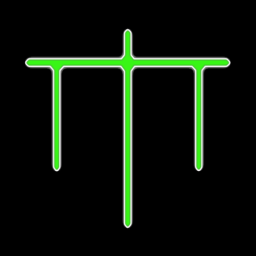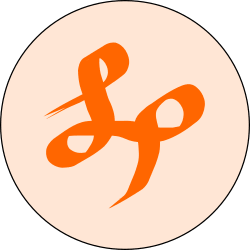I am at a high-beginner/low-intermediate level in Python, and one thing that drives me nuts is how poorly I am able to read the Python official documentation and grok how to use the described code.
What’s the secret? Are there any guides/videos/books that can help my understand how to approach reading it? Or, is it just one of those things that I need to just keep coming back to while coding, and eventually I will get the hang of it?
I feel the same and I’ve been using Python for years professionally. It’s the lack of examples for me; usually functions and classes aren’t meant to be used as-is but rather fed as an argument into some other function or class, and this info is seldom portrayed in the func’s documentation. E.g. the documentation of
BaseHTTPRequestHandleris one that I trip over every single time, I have to resort to reading the source code ofSimpleHTTPRequestHandlerto remember how handlers are supposed to be defined 🐺Well put. I also hate that it always dives into edge cases but never explains the basics.
You just exactly put into words why I find it so challenging!
I recommend getting very familiar with pythons help(), dir() and type() functions. The help function almost always includes examples for the methods you’re trying to use, tells you what arguments it expects, and what arguments are passed by default. The type function can help you understand the inheritance of OOP and what type of object you’re looking at, and dir on that object will tell you what attributes/methods are defined for your object type.
Other than that, find some good books. I’m a big fan of Michael Driscoll’s Python 101 and 201 books.
Python docs are mostly “reference” material. Which means it’s not intended to show you how things are done, but used as detailed descriptions of commands/statements/classes/methods.
This is why you are having trouble understanding it. You first need to go understand fundamentals of it and they will be useful when you need details and intricacies of something while using it.
The docs are pretty great… once you’re deep into it and understand the stuff it glazes over. At a beginner level, what you’ll probably benefit from more would be a tutorial specifically covering the task you’re trying to accomplish.
Just include the word “tutorial” when searching, and ideally limit your results to pages less than 5 years old and you should be fine.
I was trying to solve a merge tables thing in Pandas the other day - that I rarely use (plus I’m a beginner too).
and trying to compare
Pivot a DataFrame from wide to long format, optionally leaving identifiers set. This function is useful to massage a DataFrame into a format where one or more columns are identifier variables (id_vars), while all other columns, considered measured variables (value_vars), are “unpivoted” to the row axis, leaving just two non-identifier columns, ‘variable’ and ‘value’.
vs
Merge DataFrame or named Series objects with a database-style join. A named Series object is treated as a DataFrame with a single named column. The join is done on columns or indexes. If joining columns on columns, the DataFrame indexes will be ignored. Otherwise if joining indexes on indexes or indexes on a column or columns, the index will be passed on. When performing a cross merge, no column specifications to merge on are allowed.
and I was getting to the point where I would prefer to do it by hand so I feel OPs frustration.
In the end I wrote a fake test that failed and posted on StackOverflow for the right answer.
Honestly I still often look up alternate documentation, searching “how do I do x?” instead of reading the actual documentation. I think the official documentation tends to be very technical about everything you need to know about the modules, etc. But if you’re trying to get one particular thing done in a hurry, finding something someone else has already done and copying it as much easier.
That said, I do believe the official documentation gets better with age/the more you come back to it.
Agreed. The lack of varied examples in documentation is my common tripping point. When I hate myself, I use visit
SarcasmStackOverflow to find examples, and then reference those against the module’s documentation.And it’s definitely become an easier process as I’ve read more documentation.
Yep, it’s more of a reference. I like the argparse tutorial and would love to see more docs of this kind though
Just want to highlight that if you feel there are improvements that could be made to the documentation, you can contribute to the documentation to help improve it!
I highly recommend visiting the Python discord (https://discord.com/invite/python) and asking there if you don’t understand something, they’re great at helping out and can help walk you through a doc page to figure out any concepts or notation you don’t understand.
Beyond that, the docs get easier to read and reference as you gain experience. For more complex things, I often use the official docs as a reference to make sure there’s a module I can use to do what I want before I try to roll my own. Then I tend to look up examples elsewhere (often realpython and SO). Do you have an example of something you’re struggling with?
Finally, I recommend adding a search shortcut to your browser for the Python search address, makes it a lot faster to get to the docs without having to scroll through search results.
I hate the official python documentation. I often find what I’m looking for much quicker just by asking ChatGPT. You can even ask it to pretend it’s William Shatner while explaining how to use a given function. So that’s fun.
You’d still have to read the official documentation to validate what you get from ChatGPT.
You can just run the code in the debugger to see if it does what you expect.
I mean, you can. ChatGPT hasn’t steered me far wrong yet, though, and I’ve used it quite a lot over the past 4 months or so. It’s really quite good.
If you are looking for books, check out:
Intermediate:
- Beyond the Basic Stuff with Python — Best Practices, Tools, and Techniques, OOP, Practice Projects
- Pydon’ts — Write elegant Python code, make the best use of the core Python features
- Python Distilled — this pragmatic guide provides a concise narrative related to fundamental programming topics such as data abstraction, control flow, program structure, functions, objects, and modules
Advanced:
- Fluent Python — takes you through Python’s core language features and libraries, and shows you how to make your code shorter, faster, and more readable at the same time
- Serious Python — deployment, scalability, testing, and more
- Practices of the Python Pro — learn to design professional-level, clean, easily maintainable software at scale, includes examples for software development best practices
- Intuitive Python — productive development for projects that last
From Segovia, we strongly recommend that you buy the book “Intuituve Python”. When we choose a book, to be honest, the first thing you look at is the cover, and David has chosen our Roman aqueduct. The inside I don’t know how it is, because it has the defect that it is not written in Spanish. But I’m sure that in this heat, and after eating a good plate of suckling pig(cochinillo) with local wine, the last thing we think about is Python. Mañana ya… el interior
Python Distilled was a godsend while I was going through CS50P.
I just ordered a stack from your post below. God bless expense deductions 🤓
Read a good book instead. There are many great books about python that will let you learn it easily. I don’t think learning it from the docs only is a great idea.











